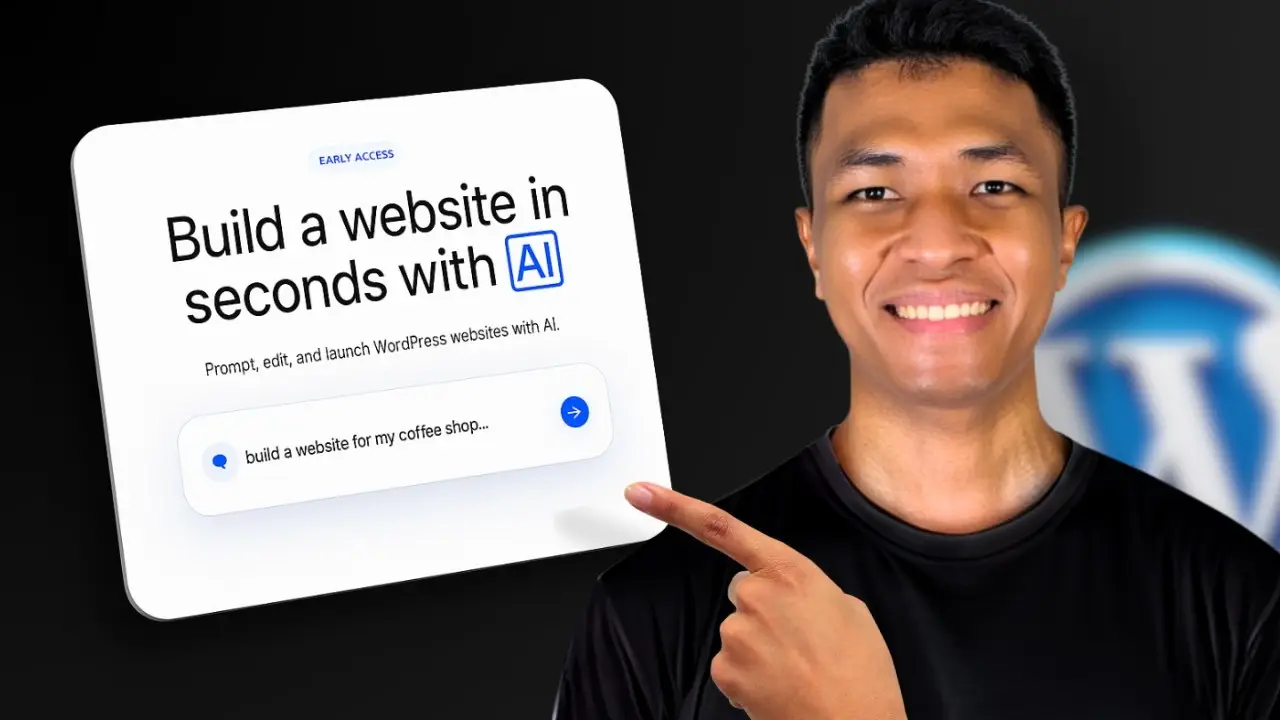Key Takeaways:
- Perplexity Pages is an AI-powered tool allowing you to quickly create high-quality, indexed articles.
- You can insert your own links, driving targeted traffic directly to your site.
- Although backlinks from Perplexity Pages are no-follow, they still offer valuable referral traffic and brand visibility.
If you’re like me, always hunting for fresh ways to boost website traffic, you’ve probably heard about Perplexity AI. It’s rapidly becoming the go-to research platform, boasting millions of visitors every month. But did you know you can leverage this traffic for your own website using a feature called Perplexity Pages?
I recently stumbled across this feature and was blown away by its potential. In essence, Perplexity Pages lets you create Wikipedia-style articles in just a minute or two. All you need is a topic or prompt—Perplexity handles the rest. And here’s the kicker: these pages get indexed by Google, meaning they can generate significant organic traffic.
Even better? You can insert your own links into these articles. That means when readers click through, they’re directed straight to your website—potentially converting into customers.
What Exactly Are Perplexity Pages?
Think of Perplexity Pages as mini-Wikipedia entries that you control. You write a prompt, and the AI generates a comprehensive, citation-rich article. Then you can tweak it to match your brand voice and add relevant images automatically generated by the platform.
The best part? These pages are indexed by Google. That means they can show up in search results and drive organic visitors directly to your content. For instance, some pages receive over 10,000 visits per month—imagine capturing even a fraction of that traffic!
How Do You Create a Perplexity Page?
First things first: you’ll need a Perplexity Pro subscription. The free version won’t cut it here since it doesn’t include page creation features.
Once you’ve got Pro access, creating a page is straightforward:
- Log in to your account and navigate to your library tab.
- Click “Create a Page.”
- Enter your topic or prompt.
- Let the AI do its magic—generating detailed content in under two minutes.
Afterward, you can easily add more sections or subtopics to enrich your article further. I usually pick from the suggested ideas or write my own subheadings if needed.
Adding Visuals & Media
Articles without visuals are like pizza without cheese—something’s definitely missing! Thankfully, Perplexity has built-in media integration tools that make adding images effortless.
You can:
- Automatically search for relevant images online.
- Upload custom images from your computer.
- Generate unique illustrations using Perplexity’s AI image creator.
I’ve found that adding visuals significantly boosts engagement and makes the content feel more polished and professional.
Strategically Inserting Your Links
Now comes the juicy part—adding your own links! This step is crucial because it’s how you’ll funnel visitors from Perplexity directly to your site. But there’s a catch: don’t just rely on tiny citation links at the bottom of the page; they’re not very clickable.
Instead, use descriptive anchor texts within the article itself. For example, if you’re writing about Gutenberg blocks in WordPress, link naturally within relevant content like “how to insert Gutenberg blocks in WordPress.” This approach makes it clear what readers can expect when clicking through.
Here’s how I typically insert links:
- Scroll down to the bottom of your Perplexity Page editor.
- Use this special prompt format:
Using markdown formatting cover the topic and then add the anchor link [Your Anchor Text](your-url-here)- Hit enter and watch as Perplexity seamlessly integrates your link into a new section.
How Effective Are These Links for SEO?
Now you’re probably wondering: “Will these links help my SEO?” The short answer is yes—but with some caveats.
I checked the HTML code on one of my published pages and discovered that these outbound links are marked as no-follow by default. That means Google doesn’t consider them as strong ranking signals compared to do-follow backlinks.
But don’t let that discourage you! Even no-follow links have value:
- They still send real human visitors to your site.
- Increased traffic boosts user engagement metrics like session duration and reduced bounce rates.
- Better engagement indirectly supports SEO goals by signaling quality content to Google.
So while they might not directly boost rankings through link juice alone, they certainly contribute positively overall.
Strategic Ways to Maximize Traffic & Backlinks
To really capitalize on this feature, you’ll want to be strategic about topics you choose for Perplexity Pages:
| Strategy | Description |
|---|---|
| Resource Page Method | Create comprehensive resource collections on popular niche topics; pitch them as helpful resources for backlinks |
| Guest Posting | Use trending topics identified by Perplexity insights for compelling guest post pitches |
| Skyscraper Technique | Find popular content with many backlinks; create improved versions with updated info using Perplexity |
| Broken Link Building | Identify broken resources in your niche; replace them with fresh Perplexity-created content |
I’ve personally found success combining these strategies with automated tools for outreach scaling while maintaining high-quality standards.
Optimizing Your Content for Maximum Visibility
To ensure maximum visibility on both Google and Perplexity itself, follow these best practices:
- Provide clear answers tailored specifically towards user intent.
- Structure content with clear headings and bullet points.
- Include up-to-date information with credible references.
- Anticipate follow-up questions users might have about your topic and address them proactively within your article.
By following these guidelines consistently, you’ll significantly increase chances of being cited by other websites—and that’s where real backlink magic happens!
If you’re new to optimizing content specifically for AI-driven platforms like Perplexity AI, check out my guide on how to rank effortlessly on Bing—many principles apply here too!
Real-Life Example: Maximizing SEO with Gutenberg
Let’s say I recently wrote an article titled “How to Insert Gutenberg Blocks in WordPress”. To drive traffic there using Perplexity Pages:
- I use ChatGPT or AnswerThePublic.com to find related blog ideas like “Maximizing SEO with Gutenberg”.
- Create a detailed page titled something like “Best Gutenberg Editor Tips for SEO”.
- Insert my original article link naturally within the text using descriptive anchor text such as “learn how to insert Gutenberg blocks effectively”.
This method ensures readers click through because they’re genuinely interested—not just because there’s a random tiny citation number at the bottom!
Tracking Your Results & Adjusting Strategy
Once published, track performance metrics closely:
- Monitor clicks coming from each specific page via Google Analytics.
- Check average session duration & bounce rate improvements from this traffic source.
- Adjust future topics based on which pages perform best.
By regularly analyzing performance data from these pages (like clicks received), you’ll refine future prompts accordingly—maximizing every bit of potential traffic!
For more tips on tracking results effectively check out my post “Simple Trick To Rank On Google” where I dive deeper into analytics strategies!
Final Thoughts: Is It Worth It?
Absolutely yes! While no-follow backlinks might not directly skyrocket domain authority overnight—they certainly drive quality targeted visitors straight onto our websites without much effort involved at all!
The key lies not only in creating engaging articles but also strategically placing appealing internal links throughout each piece (here’s how). By consistently leveraging this powerful feature alongside traditional SEO methods—you’ll soon see significant growth both organically & via direct referral visits from high-quality sources like Perplexity itself!






